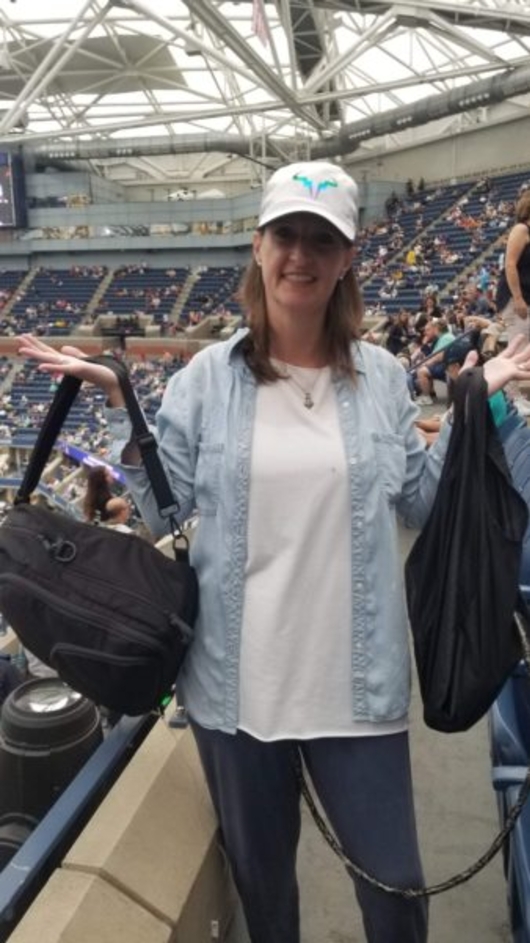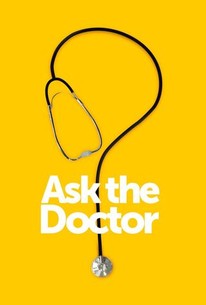
Newsletter for January 2023
Officers:
President: Jerry Downs 941-629-7568 fldowns@embarqmail.com
Vice President: Ken Aukett 609-315-8115
Secretary: Lovelle Meester 612-240-2175
Treasurer: Lorelie Godbout 603-474-9063
Directors: Janice Creutzmann 910-382-2509
David Sandora 941-828-1076
Committees:
Newsletter: Lorelie Godbout
Programs & Education: Jerry Downs,
Gloria Patmore, RNET (retired) 941-627-3077
Nancy Frank, RN, BSN, CWOCN 941-629-5118
Marie Michel, RN, CWCA, CHRN, OMS 941-626-2607
Visitation: Nancy Frank, RN, BSN, CWOCN
Library: Lorelie Godbout, RN (retired)
Professional Advisors:
John P. Rioux, MD, F.A.C.S.
Nancy Frank, RN, BSN, CWOCN
Marie Michel, RN, CWCA, CHRN, OM
A 501 (C) (3) nonprofit organization, (tax-deductible donations) Website www.ccosg.org
![]()


Another year has come and gone. I hope everyone had a great Holiday Season. It has been a very busy time for me and I am just starting to get back to normal and getting myself organized. I became a procrastinator in the last few months and now it is time for me to get back on schedule. I hope everyone had a Happy New Year and the year ahead is filled with good health and many great memories. The next articles I found were in the UOOAA e-newsletters.
![]()
Bethany’s Story: An Architect Learns to Engineer Life with Short Bowel Syndrome
My journey to a Short Bowel Syndrome (SBS) diagnosis followed years of motility issues, intestinal complications and numerous surgeries, including a jejunostomy, which is an ostomy that creates an opening in the part of the small intestine called the jejunum. As a trained architect, I believe there’s no problem too big to solve, and applying that mindset has helped me to navigate the challenges of SBS and life with an ostomy. This is my story.

When I was diagnosed with a motility disorder at the age of 15, I never thought that it would have such an effect in my life. I was able to function with physical activity and a limited diet until I had my colon removed in 2015 due to colonic volvulus. In my case, this meant that my colon twisted around itself, causing tissue death from lack of blood flow. The procedure worsened my underlying motility disorder of the small intestine. As a result of my underlying condition of chronic intestinal pseudo-obstruction (CIPO), my intestines wouldn’t function. I lost the ability to absorb nutrients through my small intestine. I was in desperate need of answers.
Ultimately, I was evaluated for an intestinal transplant. At the time, my small intestine was severely compromised due to small intestinal bacterial overgrowth. In order to improve my odds of surviving the transplant, I underwent surgery to remove the majority of my small intestine in 2018, leaving me with only four inches of small intestine that didn’t function properly. The surgery, and the resulting serious and chronic malabsorption disorder that accompanied it, resulted in my diagnosis of short bowel syndrome, SBS.
While not everyone will experience an SBS diagnosis the same way, for me, the removal of my colon and most of my small intestine eliminated the ongoing pain and discomfort I experienced when I was living with a motility disorder and chronic intestinal pseudo-obstruction syndrome. Just prior to the surgery to remove my small intestine, I weighed 87 pounds and couldn’t walk half a mile without becoming exhausted. I now weigh 122 pounds and was able to walk nine miles the other day. Keep in mind that this is just my experience and everyone’s journey will be different. In consultation with my medical team, I have decided to put my intestinal transplant on hold.
In my case, living with SBS also means that if I don’t eat the right things, it can affect my electrolytes and fluid balance. Without my colon, I don’t absorb fluids. So, I have found that if I drink water, I can actually lose fluids. A key part of managing my condition has been learning to listen to my own body and trying to understand what’s happening inside. For example, I have learned to recognize the signs of dehydration and have made it a priority to understand my lab values. As I have gained a better understanding of my condition, I also think it’s been important for me to find the right providers for what I’m going through at each stage of the process.
 Navigating how to live with a jejunostomy was a challenging aspect in my SBS management, especially when I experienced leaking. I remember once going to a rare bookstore and my ostomy bag opened. In those moments, with liquid pouring down my legs, I had never felt more embarrassed. However, my grandma taught me that you have a choice in uncomfortable situations – you can either cry or laugh. I try to choose the latter. Not everyone will experience leaks with an ostomy, but if it happens to you, I’d encourage you to give yourself grace. Adapting to life with an ostomy can be a gradual process. For example, when I first had my jejunostomy, it took me an hour to change my bag and now it only takes me 15 minutes.
Navigating how to live with a jejunostomy was a challenging aspect in my SBS management, especially when I experienced leaking. I remember once going to a rare bookstore and my ostomy bag opened. In those moments, with liquid pouring down my legs, I had never felt more embarrassed. However, my grandma taught me that you have a choice in uncomfortable situations – you can either cry or laugh. I try to choose the latter. Not everyone will experience leaks with an ostomy, but if it happens to you, I’d encourage you to give yourself grace. Adapting to life with an ostomy can be a gradual process. For example, when I first had my jejunostomy, it took me an hour to change my bag and now it only takes me 15 minutes.
Despite the challenges, I never gave up on looking for answers and solutions. My training as an architect has led me to believe there is nothing that can’t be solved. After consulting with multiple ostomy teams and connecting with people who share similar experiences, I started to embrace the changes that came with my SBS diagnosis and jejunostomy.
I have been lucky enough to receive tremendous support throughout my SBS journey. My family is my biggest source of support. My husband has been there for me despite knowing about my chronic condition. My dad is the one who figured out how to empty the additional drainage bag overnight by flipping it upside down. My mother and grandma have created customized recipes to help with my oral food intake. But, for me, it’s been a continual process to educate the people around me about my condition. I have learned to be patient and vocal about my specific needs.
For anyone living with a rare and chronic illness, I encourage you to reach out and seek community support. A few members of the SBS community have inspired me and helped me to better understand my condition and encouraged me to break down barriers in my own SBS journey by sharing their own experiences. I’m grateful for the opportunity to connect with others going through similar experiences.
When I was first diagnosed with SBS, I did not think it would be possible to continue doing the things I love. Along the way, the architect in me has looked for opportunities to “design my future” with SBS by embracing challenges, educating myself and the people around me, and connecting with others in the community. I am proud of the progress I’ve made – I have a job that I love and I live in a city that I love. SBS is only a small piece of who I am, and it does not define who I am. I hope you can embrace YOUR journey with SBS, too.
This article was created by Takeda.
To learn more about SBS, visit https://sbs-whattoknow.com/. To join the community and talk with others who are living with SBS, check out https://www.facebook.com/TakedaSBS/.
Editor’s Note: This educational article is from one of our digital sponsors, Takeda. Sponsor support along with donations from our readers like you help to maintain our website and the free trusted resources of UOAA, a 501(c)(3) nonprofit organization.
![]()

Ask Dr. Beck
Dr. Beck is board certified in general and colon and rectal surgery and is a Clinical Professor of Surgery at Vanderbilt. Dr. Beck conducts research into colorectal diseases, has authored and edited nine medical textbooks and has written over 350 scientific publications. He was the President of the American Society of Colon and Rectal Surgeons (ASCRS) from 2010-2011. Dr. Beck is a nationally recognized expert in inflammatory bowel disease, anal, rectal, and colon cancer, stomas, adhesions, bowel preparation, sphincter-saving surgery for cancer, laparoscopic surgery, and postoperative pain management.
Q. Medication Absorption
I got an ileostomy for inflammatory bowel disease, but I’m getting symptoms again. My doctor prescribed modified-release tablets of mesalazine. I usually take these with food every morning. I have noticed these tablets in my pouch completely intact! They obviously aren’t working, so what should I do?
A. An ileostomy by itself usually doesn’t significantly alter the absorption of most medications (as the length of the small bowel [where most of the absorption occurs] is about the same. Some of the confusion is that some medications are put into capulets (or carriers) and the medication is absorbed but the carrier comes out of the stoma looking intact (without a stoma it would be mixed in with the stool). With most medications, we dose to effect. E.g., for blood pressure, we start with a dose and see how it affects the blood pressure. If the result is not adequate, we just increase the dose or try another medication. For some medications, we can also measure blood levels (ie. Thyroid, some Crohn’s medications, etc.). Most physicians start at the recommended dosage (whether it is a pill or liquid) and monitor the patient. The dosage can then be modified as needed. Your pharmacist is also a good source of information about your medication. I would discuss your situation with your physician. Depending on which medication you are on and your symptoms, your physician may change or add to your medications.
![]()
Ask the Ostomy Nurse
Linda Coulter has been a Certified Wound Ostomy & Continence Nurse for 10 years. In addition to working with hundreds of people with stomas, she has trained several WOC nursing students at the R.B. Turnbull Jr. School of WOC Nursing. Linda has presented nationally and internationally on ostomy-related topics. From her home base at University Hospitals’ Ahuja Medical Center, Linda is active in raising Ostomy Awareness and works to distribute ostomy supplies to people in need throughout the world.
Managing Output During Pouch Changes
How do I manage the output when changing pouches?
C.B.
Dear C.B.,
Thank you for this important question. It’s safe to say that it is relevant to nearly all Phoenix readers. Since stoma functioning and ostomy output is not under your control, it’s important to have some tips and tricks for managing output while changing your pouch.
First, consider the time of day when you change the pouch. The stoma, regardless of whether it is a urinary or bowel diversion, will function less when you first wake up, before you eat or drink anything. Eating and drinking stimulate the bowel, making stoma output more likely.
Second, if you have an ileostomy, try eating about four full-sized marshmallows about 15 minutes or so before removing the pouch. Some of my clients report that marshmallows work to slow output, while others have said they didn’t help at all. A study has actually been done looking at the effect of marshmallows on ileostomy output. Researchers found that 71% of participants reported less output and thicker output from their ileostomies after eating marshmallows. Maybe you’ll be in that 71%.
Third, take steps to make the pouch change as quick as possible. For example, cut your pouch and place the barrier ring or stoma paste on it, then lay out all your supplies in the order that you’ll use them: adhesive removers, cleaning wipes, drying cloths, and prepared pouch. Have plenty of extra paper towels on hand, just in case functioning does happen. After making these preparations, remove the pouch, clean and dry the skin, and place the new pouch. The quicker you are, the less opportunity the stoma will have to function while the pouch is off.
If you find these tricks aren’t enough, there is a tool available that was designed specifically for this purpose. It’s called the StomaGenie®. Visit the company’s website (stomagienics.com) to watch a demonstration video and see if you think the product might work for you. The device is reimbursable by Medicare and many insurance plans.




